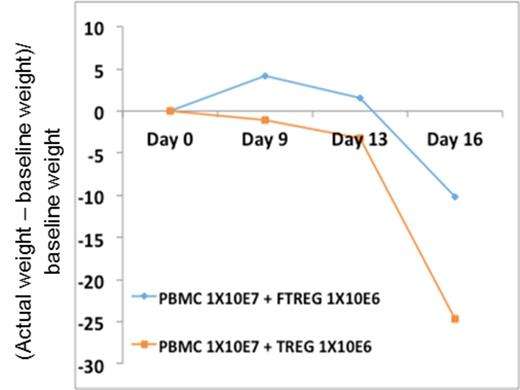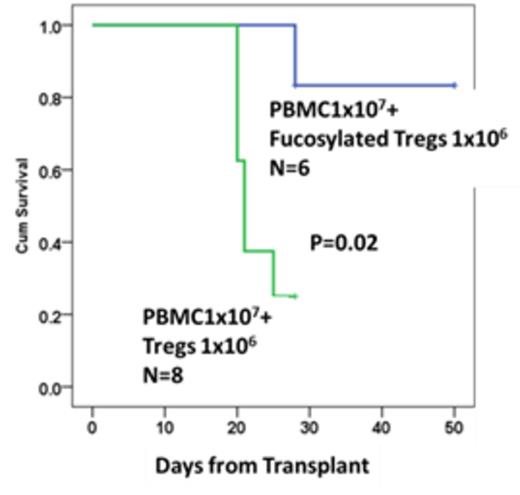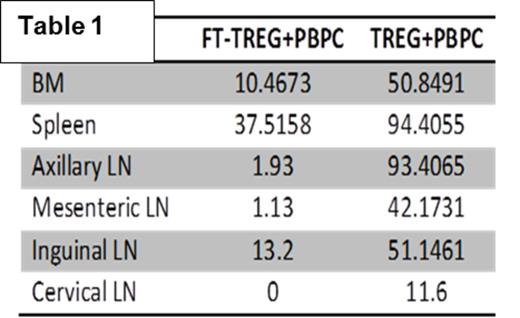Abstract
Emerging preclinical data indicate a potential therapeutic use of regulatory T cells (Tregs) to suppress or eliminate graft versus host disease (GVHD). Adoptive therapy with Tregs has been examined as a prophylactic strategy for GVHD. Thus far, 1:1 ratio of Tregs to conventional T cells (Tcons) has been required to prevent GVHD, and such high targeted cell doses are hard to achieve in a clinical setting due to variability in Treg frequency and expansion potential. As a result, novel strategies are needed to generate clinically-effective Treg products. Additionally, since the ability of Tregs to enter inflamed tissues has been shown to be critically dependent on their ability to bind E- and P-selectins, we sought to exploit this pathway to improve Treg homing. Incubation of culture expanded Cord Blood (CB) Tregswith fucosyltransferase-VI (FTVI) increased the degree of fucosylation from 8% to 64%. Importantly, fucosylated Tregs are able to suppress T cell proliferation in an in vitro allogeneic mixed lymphocyte assay and show preferential increase in the E-selectin binding ability when compared to untreated Tregs. We injected 10e6 Tregs vs. 10e6 fucosylated Tregs followed by 10e7 peripheral blood mononuclear cells in the sublethally irradiated NOD/SCID gamma null (NSG) xenogenic GVHD mouse model, and recipients of untreated Tregs showed weight loss as early as day 6 whereas fucosylated Treg recipients retained weight until day 12 (Fig 1). Fucosylated Tregs were detected in the peripheral blood of mice until day 31 as opposed to day 12 for untreated Tregs. As compared to recipients of untreated Tregs, lower numbers of GVH-inducing allogeneic T-cells were detected in the secondary lymphoid organs in the fucosylated Treg recipients (Table 1). The overall survival of fucosylated Treg recipients was significantly superior to that of untreated Treg recipients (Fig 2). We conclude that prophylactic treatment with fucosylated Tregs prevents GVHD and improves survival in a xenogenic mouse model at doses that are i) at less than 1:1 ratio with conventional T-cells (Tcon) and ii) are lower as compared to untreated Tregs. We believe that by overcoming the 1:1 dose requirement of Tregs: Tcons, we will be able to effectively translate Treg based adoptive therapy into the clinic for the prevention of GVHD. Establishing fucosylated Tregs as a preventive strategy for GVHD will result in a major breakthrough in the field of stem cell transplantation eliminating a major life threatening outcome of the therapy.
No relevant conflicts of interest to declare.
Author notes
Asterisk with author names denotes non-ASH members.




This feature is available to Subscribers Only
Sign In or Create an Account Close Modal